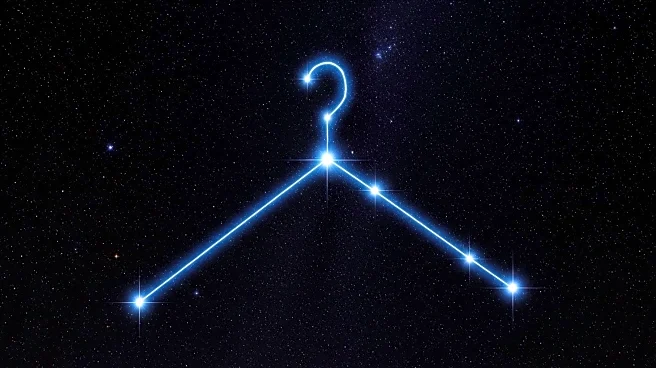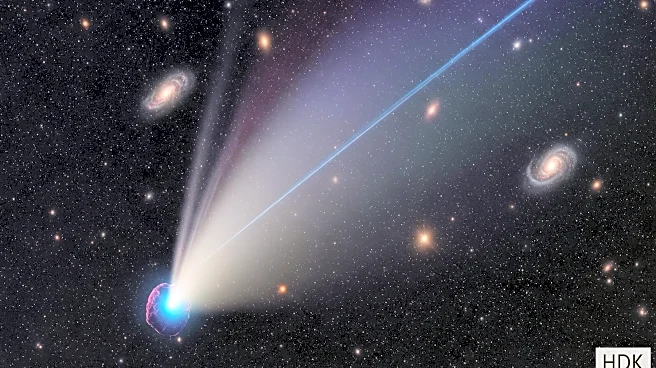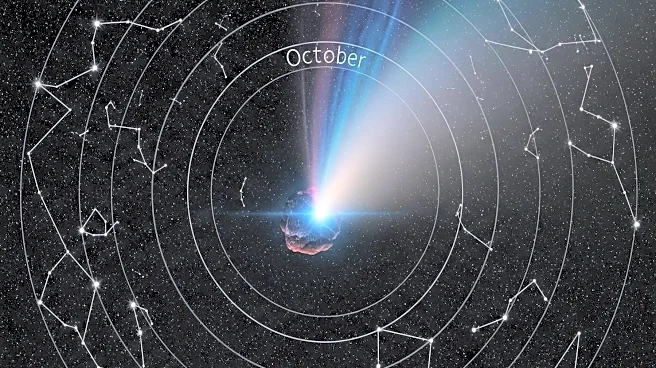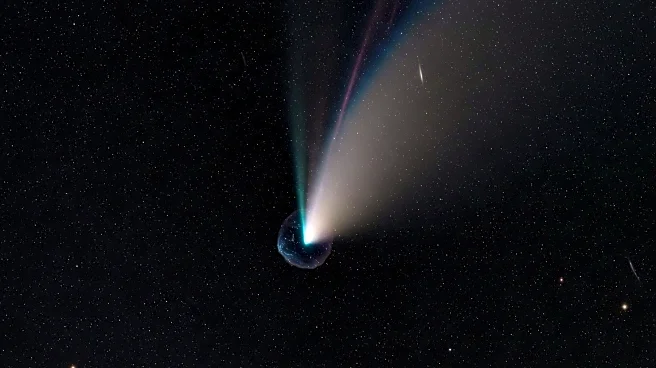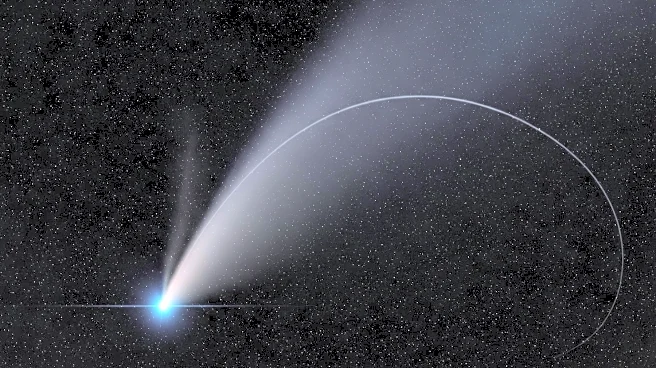What is the story about?
What's Happening?
The Coathanger, also known as Collinder 399, is an asterism in the constellation Vulpecula, visible in the Northern Hemisphere's autumn. This star pattern, resembling a coathanger, is best viewed with binoculars due to its spread-out brightness. Discovered by Persian astronomer Al Sufi and later mapped by American Dalmiro Francis Brocchi, the Coathanger was initially thought to be a star cluster. However, modern astronomy has revealed that its stars are not physically related, merely appearing together in the sky.
Why It's Important?
The Coathanger offers amateur astronomers a fascinating target for observation, showcasing the beauty and complexity of celestial formations. Understanding such asterisms contributes to the broader knowledge of star patterns and their historical significance in astronomy. Observing the Coathanger can inspire interest in stargazing and astrophotography, promoting public engagement with science and the night sky.
Beyond the Headlines
The Coathanger's history reflects the evolution of astronomical knowledge, from early observations to modern interpretations. It highlights the role of amateur astronomers in contributing to scientific discovery and the importance of accessible celestial phenomena in fostering public interest in astronomy.
AI Generated Content
Do you find this article useful?
